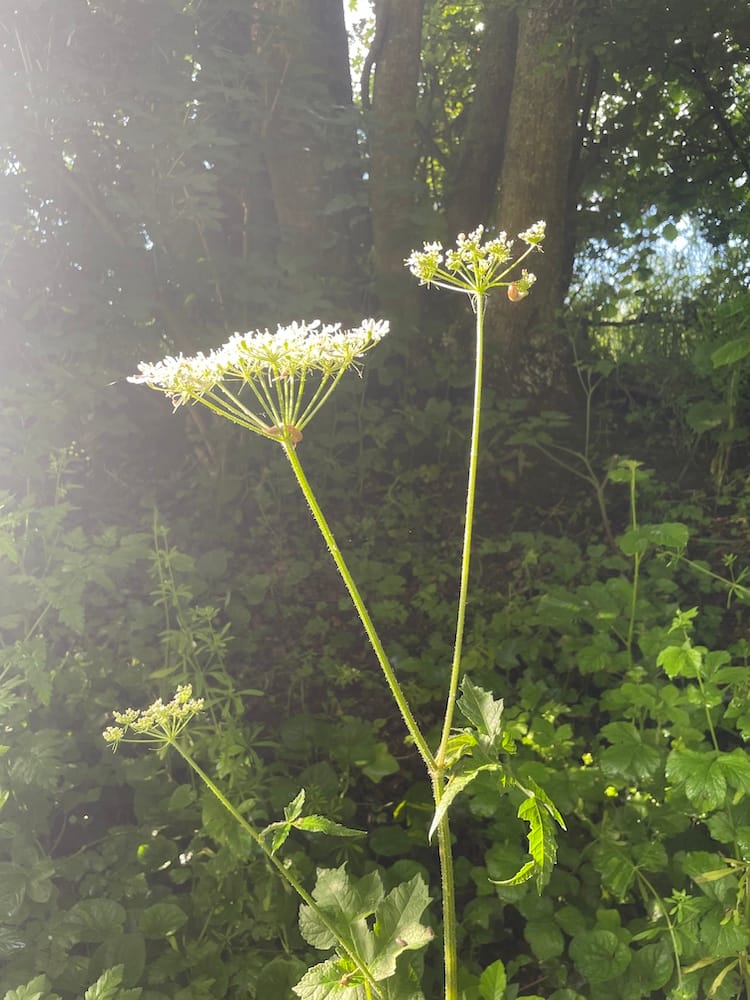Wild Things

Friday, 31 May
Say it out loud: press the L hard against your front teeth, release your tongue for the U, push your lips forward, then let them linger on the Sssshhhhh, and you’ve got it, lush, the word that plays over and over again in my ears during my morning dog walks these days.
On the rain falls, and nature is unbound.

In the previous five years of our Perche life, plant growth has been stunted by a drought or two between January and June, but this late spring, it’s a jungle out there. Thick, wet grass has grown up well above the protective rubber of my Wellington boots. Bowered hedgerows crowd together, enveloping me in varied shades of green. The verges, bulging with foliage, narrow my passage. I don't know if it's physiological, psychological or some combination of the two, but being surrounded by all that chlorophyll is a balm to body and soul.

One plant in particular, clearly thriving in this weather, has grabbed the attention of my eye and camera morning after morning: Daucus carota, the wild carrot. Though these common field flowers presage summer every year, I've never seen them in such voluptuous abundance. Their sturdy, hairy stalks topped with delicate white flowers have shot up everywhere, often towering above my head on a raised bank...

... or sneaking horizontally across my path...

The force of their presence prodded me to look them up. It turns out the wild carrot has more to it than its humble status might imply. The vocabulary to describe it - the pinnate pattern of its leaves, the inflorescence of its umbels - is rich.

It is an intrepid traveller. Native to Europe and southwestern Asia (perhaps originating in Persia), Daucus carota spread to North America and Australia with the colonisers. In the New World, it became known as Queen Anne's lace after the early 18th century Queen of Great Britain and the flower's resemblance to that delicate cloth. Legend had it that the queen pricked her finger while sewing it, thus explaining the rosy hue of young flowers and the red dot that sometimes remains in the middle.

All but the stalk of the wild carrot is edible. You can cover the flowers in batter and deep-fry them, eat the seeds, use the leaves for pesto. As I know from experience, the root, the carrot part, won't kill you, but it's too tough and reedy to chew much less to swallow. The carrots we do eat are a subspecies of the Daucus carota that was first cultivated in Afghanistan. Though they come in many colours, it is said that the orange variety prevailed when the Dutch grew them on a large scale in a salute to the royal family belonging to the House of Orange - cute or creepy, take your pick. In any case, it was a mistake. The purple ones are more beautiful and have an intenser taste.
The harmless wild carrot can easily be confused with the deadly poisonous hemlock, famously (but perhaps apocryphally) administered to Socrates after he was found guilty of religious impiety and subverting children.

It must be noted that not all plant-life in the Perche is happy with the current sodden state of affairs. Parts of our Mediterranean garden, for example, planted as such to survive the relentless heat and sun of recent summers, is drowning in Deux Champs' dense clay soil that adamantly refuses to drain.

In the fields, grassy blades of wheat and barley may be fighting for space, thus cramping the style of The Indefatigable One...

...but their grains will not ripen without a bit more help from the sun.
For the moment, however, I'm keeping my eye on the wild carrots. Their solid legs and fine faces are a reminder of nature's resilience and grace. They are well worth looking up to.

You can visit my website here and follow me on Instagram here